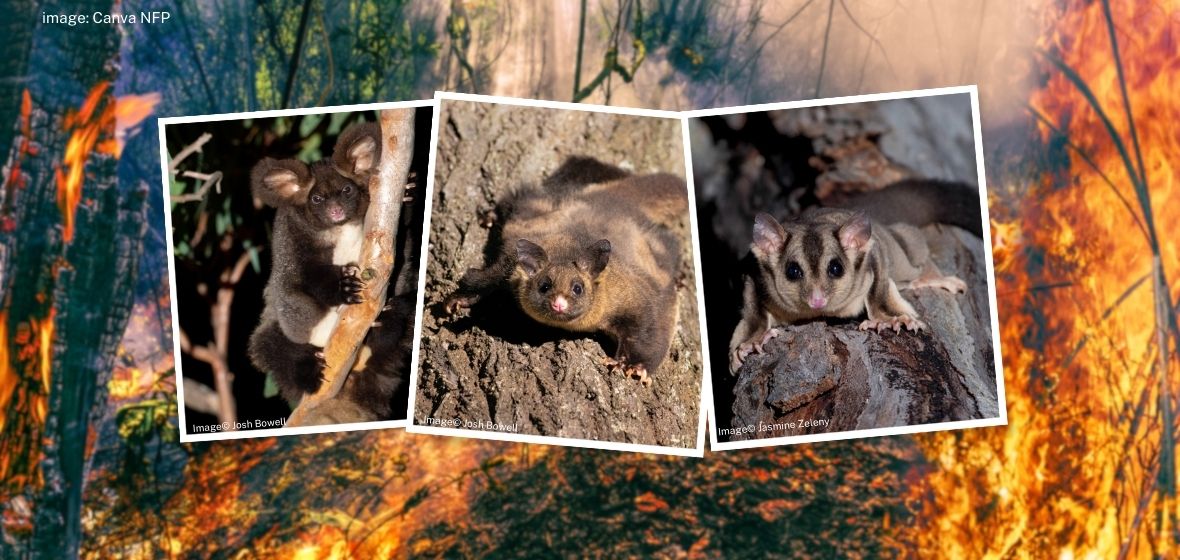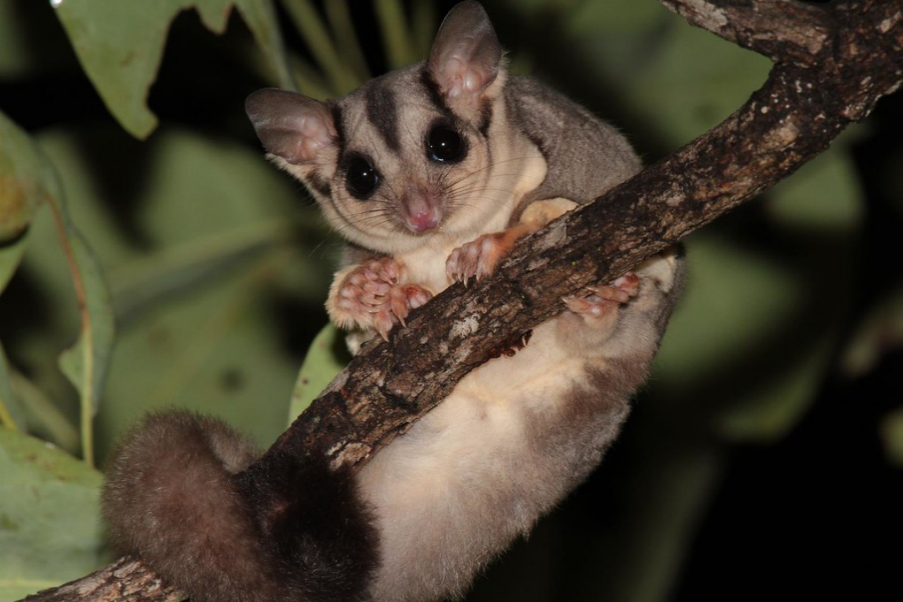
25 August 2023
During the last few weeks, we have all heard and read articles warning of the impending bushfire season during our hot summer months. The landscapes we adore and the wildlife we cherish become exposed and vulnerable, and communities can be completely devastated.
Arboreal wildlife at risk
Over 700 threatened animal species across Australia depend in some way on forests. In Queensland, our rainforests and eucalypt woodlands provide a unique habitat for a diverse array of species, from iconic koalas and agile gliders to a variety of colourful birds and elusive marsupials.
But when bushfires ravage Australian forests, our arboreal (tree-dwelling) wildlife is profoundly affected. Many animals are injured or killed directly by the fires or suffer from smoke inhalation. The rapid spread of flames can destroy their habitats, leaving them homeless and vulnerable to predation. The loss of vegetation reduces food sources, making survival difficult. Even if they escape the flames, displaced animals struggle to find suitable shelter and resources, often leading to increased competition and stress.
The long-term impact on our wildlife includes:
- population declines
- disruptions to ecosystems
- challenges in recovery due to altered landscapes and limited resources.
Sadly, some arboreal species are at risk of being lost forever.
Bushfires severely impact glider species
The devastating impact of bushfires on gliders has raised urgent concerns about the future of these remarkable creatures. Gliders are hollow-dependent, so they are found only in habitats with plenty of tree hollows. Moreover, they rely on trees for their diet of leaves, nectar, pollen, sap, and insects.
Ten species of gliders reside in Australia, including:
- sugar gliders (Petaurus breviceps), (Petaurus notatus), (Petaurus ariel),
- yellow-bellied gliders (Petaurus australis)
- greater gliders — central and southern greater glider (Petauroides volans) and northern greater glider (Petauroides minor).

Sugar Glider (Petaurus breviceps) © Michael J. Barritt
The recent surge in bushfires has destroyed critical habitats and food sources for these marsupials, pushing them to the brink of survival. The loss of tree hollows and vegetation leaves gliders homeless and without food.
As we grapple with the escalating frequency of wildfires, efforts to protect and restore glider habitats have become paramount to ensuring the continued existence of these unique and vulnerable species.
Wildlife Queensland helps endangered gliders post-bushfire
In late 2022, Wildlife Queensland held a Threatened Glider Recovery webinar to discuss the conservation needs of South East Queensland’s large gliders post-bushfire and the techniques and survey methods used to find and safeguard these species. The webinar focused on the endangered greater glider and yellow-bellied glider, elaborating on the outcomes of multifocal surveying methods and public awareness-raising activities.
Our glider recovery project was made possible due to funding from the Australian Government’s Bushfire Recovery for Wildlife and Their Habitats Program, which is helping conserve these and other species following the severe bushfires of 2019–2020.
Read Wildlife Queensland’s A Revegetation Guide to the Threatened Gliders of Southern Queensland to learn about the habitat needs of Queensland’s two largest gliding marsupials — the greater glider and the yellow-bellied glider — and what you can do to help them, particularly in regions affected by the 2019–2020 bushfires.
In conclusion, escalating bushfire threats to our precious gliders require urgent action to protect and restore habitats for these vulnerable species, ensuring their continued existence for future generations.
How you can help
- Learn how to prepare and protect yourself, your animals, and wildlife for the upcoming bushfire season here.
- Leave a gift in your Will to Wildlife Queensland to help preserve our natural environment and its inhabitants for future generations.
- Donate to Wildlife Queensland to help fund our vital projects, such as our glider recovery projects and the Queensland Glider Network.
